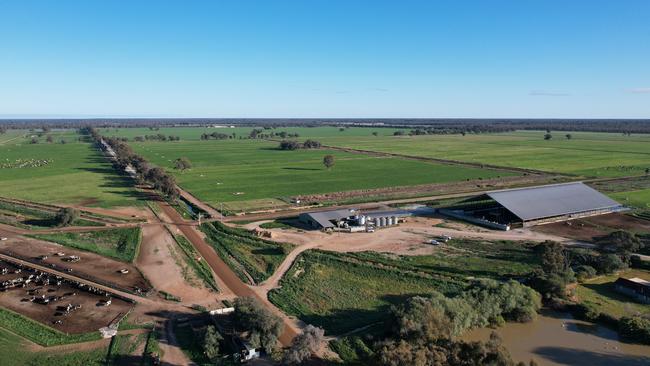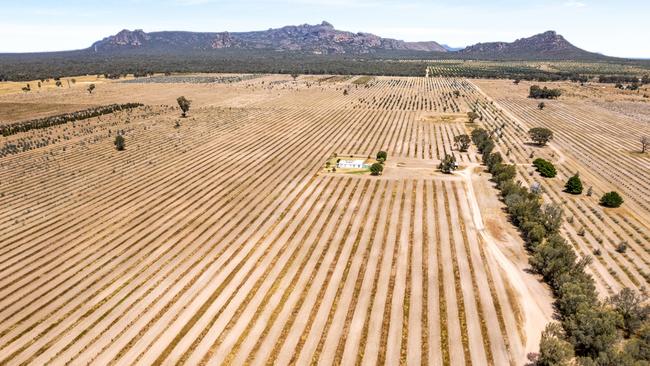Kanyapella Dairy and Wimmera Wildflowers listed for sale
A 763ha dairy farm near Echuca, with a 1000-cow milking capacity, has hit the market where it is expected to command strong offers.
Capacity for growth is a key asset at the 763ha Kanyapella Dairy, a highly productive enterprise in the Goulburn Valley offering a substantial irrigated milking platform supported by additional irrigated and dryland grazing.
Located at Kanyapella, 12km east of Echuca, the property’s appeal is underpinned by generous infrastructure, reliable water, scale and suitable soil types.
Patrick McMonagle bought the farm in 2004 as an operating dairy, building a state-of-the-art feed barn four years later.
It features multiple contiguous titles with 510ha under flood irrigation, 170 paddocks accessed via an all-weather laneway system and soils of grey-brown to red-brown sandy loams over clay subsoils.
Kanyapella Dairy has a peak milking capacity of 1000 cows with a current lactating herd of over 800 Holstein-Friesians producing an average 572,736kg milk solids annually.

The dairy complex comprises a 60-bale rotary with cup removers, 24,200-litre vat, eight silos, a holding silo, flood-washdown system, office and amenities, back-up generator, ADF milking system, 300-cow yards and three in-line effluent ponds.
The feed barn has a capacity of 1200 lactating cows for mixed ration feeding.
“The property has 377 megalitres of high reliability water from the Goulburn River, 375 megalitres from the Warrigal Creek on one of our boundaries, unlimited high-reliability, high-
flow diversion from the Warrigal Creek and 275 megalitres from the lagoon,” Patrick said.
“We have a 40-megalitre pump on the Goulburn, a 38-megalitre pump on the creek and a 25-megalitre pump at the lagoon, which is replenished by every rain event.
“We do all our own harvesting for silage, aiming for anywhere between 1500 and 2000 tonnes of grass silage.”
Kanyapella Dairy is for sale at $17 million, walk-in walk-out, via expressions of interest closing December 14 at 3pm.

Meanwhile in the state’s west the 423ha Wimmera Wildflowers property and business has hit the market.
Jeffery Beats was just a toddler when his family relocated to Laharum, a rural locality at the northern edge of the Grampians National Park, about 26km south of Horsham.
He said growing wildflowers had been in the Beats family for generations, but when his parents moved to the Wimmera they wanted to try their hand at carrying sheep first.
“We moved here about 33 years ago and tried sheep, but wildflowers have been in my family since about 1946. My family were mainly based east of Melbourne, around Gippsland and Lang Lang,” Jeffery said.

“I left school at 15-years-old and have worked on the farm with my parents since then.
“It was a no-brainer really. I wanted to help my family prosper and it is a very aesthetic place to work with all the flowers and the views of Mt Zero and the Grampians.
“We started with about 450 acres (182ha) and then added nearby blocks to have more than 1000 acres (404ha) now, all located near to each other.
“We have a quarter of a million plants now and produce more than a million bunches of flowers a year.”
There are 200,000 yielding plants on the property, as well as 80,000 premature plants and 50,000 nursery ready plants.
About 364ha are allocated to wildflowers including 242ha for eucalyptus, ageing from three months to 32-years-old, growing Cinerea, Pulverulenta Baby Blue, Crenulata, Risdonii, Macrocarpa, Flowering Gum and Tetragon varieties.
Offers for Wimmera Wildflowers are expected to be more than $18.5 million.




